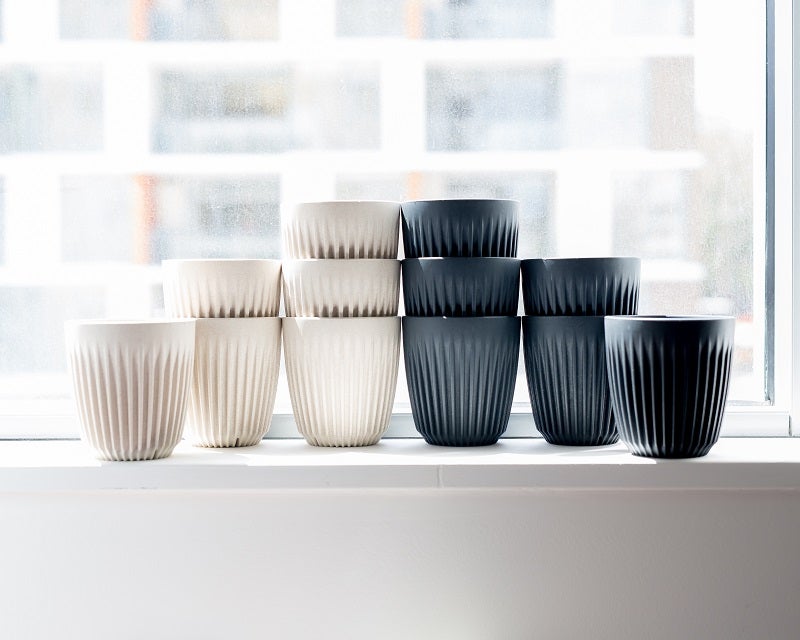
Deborah Williams: How did Huskee start?
Michael McFarlane: Our founders had a mission to rid the world of single-use, disposable cups and knew there was a better way to achieve that than what was currently on the market. They conceived the original idea and with Vert Design, created the HuskeeCup. It was then the Kickstarter that really launched us – massively overachieving our original pledge goal. This clearly demonstrated the appetite and global support we had for HuskeeCup and here we are three years later.
DW: What actually happens during the process of turning coffee husks into coffee cups?
MM: Coffee husk is melted down and formed into pellets. We then mix this with an eco-composite polymer and use injection moulding to produce the cups.
DW: Where and how do you source your coffee husks?
MM: We source all our husks from Yunan Coffee Traders. Once coffee cherries are picked they are washed, dried and milled. Husk, or parchment, is a waste product from this washed processing method.
DW: You describe HuskeeSwap as a global community of cafes and coffee drinkers, who swap and exchange a single cup, with the objective to eliminate disposable cups through a universal, scalable and sustainable system. Tell me more about the impact this initiative has had on the sustainability of the industry.
MM: Before cup exchange systems, single ownership of a reusable cup was the only alternative to a disposable cup. Although this is a great way for an individual to take responsibility for their own environmental impact, it’s simply not scalable for cafes or the industry at large. If we look ahead to an impending disposable cup ban, cafes will need a system whereby they aren’t solely reliant on customers bringing their own cup. With HuskeeSwap, cafes hold a ‘float’ of HuskeeCups, which are washed and ready to be swapped. Not only does this improve workflow and coffee wait times but means cafes can start reducing their stock of disposables or totally replace.
DW: As we know, Huskee is big on sustainability – from saving coffee waste to helping eliminate disposables. Do you have any other plans within the sustainability sector, such as reusing or recycling other waste?
MM: As part of our membership for cafes (which is free for the first 12 months), we collect, replace and repurpose all damaged and end-of-life cups into new products. Apart from creating a closed loop circular economy, the products we are designing will have various uses in the hospitality industry – watch this space.
DW: What sets Huskee apart from other sustainable coffee cup companies out there?
MM: The main point of difference is that we utilise a waste material from coffee production. It is also the most aesthetically pleasing reusable cup out there, which is why it was awarded the Good Design Award, Best In Class. Another key advantage, unlike rental cup exchange systems, is that cafes are generating their own sales as every new member needs to buy a cup. For the coffee drinker, it means they have a cup, swapping or not. It’s theirs to keep.
DW: What can we look forward to for Huskee in the next three to five years?
MM: More HuskeeSwap sites. We are working with independent cafes, councils, universities and corporates to offer single use alternatives for their customers, residents, students and employees. We have HuskeeSwap ambassadors and whole communities getting their local cafes on board so we can’t wait to welcome more people to the Huskee family, do away with disposables, and war on waste.
DW: What is the main lesson you want the packaging industry to know about sustainability?
MM: Reduce, reuse, recycle. Lots of packaging is emerging as recyclable and biodegradable, which are both vast improvements on non-recyclables. There are, however, a myriad of complications when it comes to local waste collection and processing, so in the first instance we need reusable alternatives.



